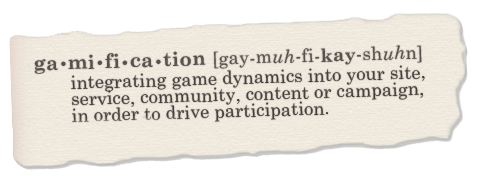
by Annie | Oct 28, 2015 | Education, Game Design
I recently attended at an event in the Bay Area for prospective Vancouver Film School students as an alumni speaker. It’s rare in life that you have a chance to deeply reflect on the experiences that have shaped your career and life, which is why I so enjoyed this event. Out in the crowd, I saw myself from several years ago, eager and anxious, and with a burning passion and dream to make a difference. Now that I’ve made it through the rigorous VFS experience, I can say that that intense year has had a profound and lasting impact on my career, the opportunities that have come my way, and the successes I’ve experienced. Check out the full presentation, and feel free to reach out if you want to hear more....

by Annie | Sep 9, 2015 | Education, Game Design, Interaction Design, Product Design, Psychology of Games
Early on in parenthood, I thought I’d somehow magically received the perfect child. He was no picky eater, rather quite the opposite. He was into steak, broccoli, watermelon, pretty much anything we put in front of him. …and then that phase ended. Nowadays, we spend dinnertimes bargaining, pleading, and joyfully cheering when even a single bite makes it down the hatch. Contrast that with the time he spends in front of a mobile device, wholly sucked in and willing to do anything to progress the game or storyline. That’s where new innovations like Yumit come in. Yumit is an interactive dinner tray that reinforces healthy eating habits by converting actual bites into virtual energy. Whether this actually has long term effects on kids’ experience and interaction with food remains to be seen. But more and more, the lines are being blurred between reality and the virtual world, which isn’t always a bad thing. After all, people are often much more engaged when cleaning a virtual room through a game than cleaning their actual room. Why? Because we all crave feedback for our actions, and online worlds often provide that instantaneous feedback to let us know the path toward a desired behavior. As for parenting, I’m on the fence as to whether I’ll try something like Yumit. While it may instantly boost veggie consumption, I’m curious about the lasting effects. But hey, I guess even one broccoli happily ingested is a...

by Annie | Aug 31, 2012 | Education, Game Design, Psychology of Games
Have you heard of gamification yet? If not, you will surely run across it at some point. Gamification is one of the hottest topics at the intersection of game design and business. Many companies are incorporating game design elements in business practices, both externally (e.g., marketing and consumer behavior) and internally (e.g., HR and employee training). In addition, gamification is being used to transform all kinds of fields, from education to journalism. If you’ve ever used a stamp card at a coffee shop (buy 10 and get one free) or gone through the LinkedIn registration process, you’ve been part of the gamification movement. People are just starting to discover the vast potential of gamification in changing human behavior, so many exciting things are happening in this field. If you’re interested in learning more, Coursera is offering a FREE online course on gamification, taught by Prof. Kevin Werbach from the Wharton School at my alma mater, the University of Pennsylvania. Over 70,000 people have already registered, myself included. You have until Sept. 9th to register, so get on it! (Coursera also has tons of other free online courses, so check them out if you get a...
by Annie | Aug 8, 2012 | Education
Back when I first started down the bumpy road into educational games, I had heard about a new school in NYC that was starting to make games front and center in the classroom. Quest to Learn is now a few years along and seems to be transforming the traditional teaching model and the way students interact and learn. Called the Hogwarts of the real world, Quest is creating an environment that actually gets students excited about learning. Who wouldn’t want a science class called “The Way Things Work,” a math class called “Codeworlds,” and “boss level” exams? Pretty exciting stuff, to say the least. Quest is definitely a school to keep an eye on in the coming years. Here’s a great article about recent goings-on at...
by Annie | Jun 1, 2012 | Education
The world is changing before our eyes. And so too should education. It’s good to know there are many great minds working on...

by Annie | Feb 6, 2012 | Education, Game Design
As a teacher, I used a lot of games in the classroom. However, it wasn’t until I left the classroom that I realized the untapped potential of existing games in transforming the educational landscape. Most people are starting to come to terms with the effectiveness of games in teaching. However, educators often overlook popular titles in favor of “educational games.” Though these educational games are certainly a step up from textbooks, they often fail to create a truly captivating experience. Thus, the dilemma. Educators know that games can engage students, but even the best educational games out there can’t compare to Angry Birds and Call of Duty. Oh dear, what to do? The answer is closer than you think. In fact, it’s staring you in the face. Instead of trying to create educational games like Angry Birds, why not just use Angry Birds itself? Every game has the potential to be a powerful educational tool. Don’t believe me? Here are some examples: Fruit Ninja: Line Graphs Have students use line graphs to determine the value of different combos in the game. Angry Birds: Perspective Have students think about the conflict between the birds and the pigs from the pigs’ perspective. Paper Toss: Wind Speed Have students analyze the trajectory of the ball and build an apparatus to measure wind speed. Doodle Jump: Ratios and Scale Have students put themselves in the game by measuring jump height and designing a level to scale. Canabalt: Parallax Effect Have students analyze the parallax effect in the background of the game, the principles of which are used by astronomers to measure far away...





